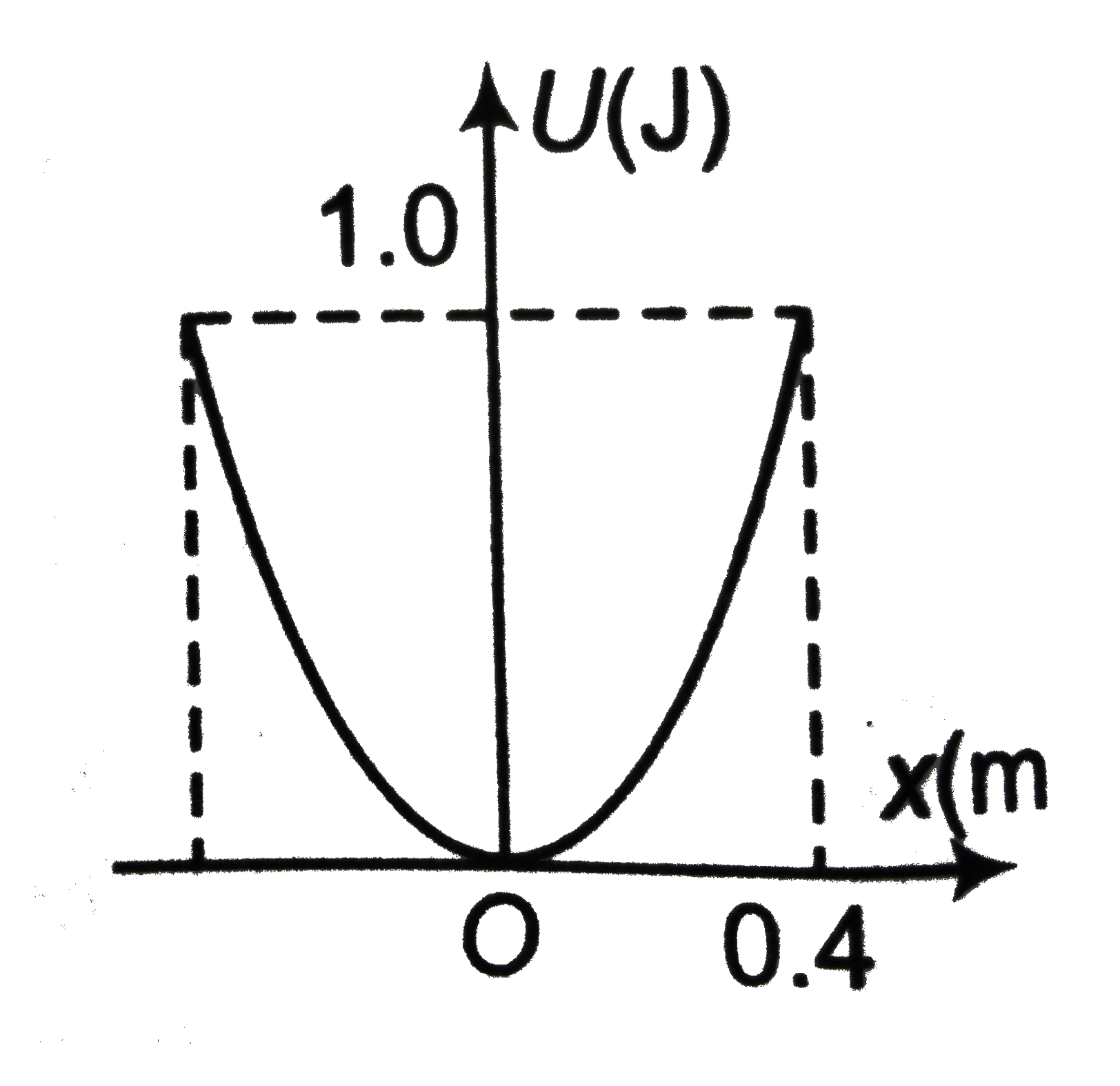The total mechanical energy of a spring mass system in simple harmonic motion is E=12mω2A2. Suppose the oscillating particle is replaced by another particle of double the mass while the amplitude A remains the same. The new mechanical energy will
become 2E
becoem E2
becoem √2E
remain E
The correct Answer is:D
To solve the problem, we need to analyze how the total mechanical energy of a spring-mass system in simple harmonic motion changes when the mass of the oscillating particle is doubled while keeping the amplitude constant.
1. Understand the formula for total mechanical energy (E):
The total mechanical energy (E) of a spring-mass system in simple harmonic motion is given by:
E=12mω2A2
where:
- m is the mass of the particle,
- ω is the angular frequency,
- A is the amplitude of the motion.
2. Identify the new mass:
If the original mass is m, the new mass when replaced by another particle of double the mass will be:
m′=2m
3. Determine the angular frequency (ω):
The angular frequency ω is related to the spring constant k and the mass m by the formula:
ω=√km
When the mass is doubled, the new angular frequency ω′ becomes:
ω′=√km′=√k2m=1√2√km=ω√2
4. Calculate the new mechanical energy (E′):
Substitute the new mass m′=2m and the new angular frequency ω′=ω√2 into the energy formula:
E′=12m′(ω′)2A2
E′=12(2m)(ω√2)2A2
E′=12(2m)(ω22)A2
E′=12mω2A2
5. Compare the new energy with the original energy:
We can see that:
E′=E
Thus, the new mechanical energy remains the same as the original mechanical energy when the mass is doubled and the amplitude remains constant.
Final Answer:
The new mechanical energy will be equal to the original mechanical energy E.
The total mechanical energy (E) of a spring-mass system in simple harmonic motion is given by:
E=12mω2A2
where:
- m is the mass of the particle,
- ω is the angular frequency,
- A is the amplitude of the motion.
If the original mass is m, the new mass when replaced by another particle of double the mass will be:
m′=2m
The angular frequency ω is related to the spring constant k and the mass m by the formula:
ω=√km
When the mass is doubled, the new angular frequency ω′ becomes:
ω′=√km′=√k2m=1√2√km=ω√2
Substitute the new mass m′=2m and the new angular frequency ω′=ω√2 into the energy formula:
E′=12m′(ω′)2A2
E′=12(2m)(ω√2)2A2
E′=12(2m)(ω22)A2
E′=12mω2A2
We can see that:
E′=E
Thus, the new mechanical energy remains the same as the original mechanical energy when the mass is doubled and the amplitude remains constant.
The new mechanical energy will be equal to the original mechanical energy E.
Topper's Solved these Questions
- SIMPLE HARMONIC MOTIONBOOK - HC VERMACHAPTER - SIMPLE HARMONIC MOTIONEXERCISE - Objective 2
14 Videos
- SIMPLE HARMONIC MOTIONBOOK - HC VERMACHAPTER - SIMPLE HARMONIC MOTIONEXERCISE - Objective-2
2 Videos
- SIMPLE HARMONIC MOTIONBOOK - HC VERMACHAPTER - SIMPLE HARMONIC MOTIONEXERCISE - Short Answer
13 Videos
- ROTATIONAL MECHANICSBOOK - HC VERMACHAPTER - ROTATIONAL MECHANICSEXERCISE - Exercises
86 Videos
- SOME MECHANICAL PROPERTIES OF MATTERBOOK - HC VERMACHAPTER - SOME MECHANICAL PROPERTIES OF MATTEREXERCISE - Exercises
32 Videos
Similar Questions
The total energy of a partical executing simple harmonic motion of period 2π secon is 10,240ert. The displacement of the particle at π/4 second is 8√2cm. Calculate the amplitutde of motion and mass of the particle
View SolutionFind the mechanical energy of a block-spring system with a spring constant of 1.8 N/cm and an amplitude of 2.4cm.
View Solution
Knowledge Check
The total mechanical energy of a particle of mass m executing SHM with the help of a spring is E=(1/2)mω2A2. If the particle is replaced by another particle of mass m/2 while the amplitude A remains same. New mechanical energy will be :
A√2EB2ECE/2DEThe total mechanical energy of a particle executing simple harmonic motion is E when the displacement is half the amplitude of its kinetic energy will be
A3E4BECE2DE4When the potential energy of a particle executing simple harmonic motion is one-fourth of its maximum value during the oscillation, the displacement of the particle from the equilibrium position in terms of its amplitude a is:
Aa/4Ba/3Ca/2D2a/3
When the potential energy of a particle executing simple harmonic motion is one-fourth of its maximum value during the oscillation, the displacement of the particle from the equilibrium position in terms of its amplitude a is
View SolutionThe tota energy of a particle executing simple harmonic motion is 16J. What will be total energy of particle if amplitude is halved and frequency is douboled?
View SolutionA particle executes simple harmonic motion. The amplitude of vibration of particle is 2 cm. The displacement of particle in one time period is
View SolutionA particle of mass 2kg moves in simple harmonic motion and its potential energy U varies with position x as shown. The period of oscillation of the particle is

View SolutionThe total mechanical enegry of a particle is E. The speed of the particle at x=(2EK)1/2 is (2Em)1/2. Find the potential energy of the particle at x :
View Solution
